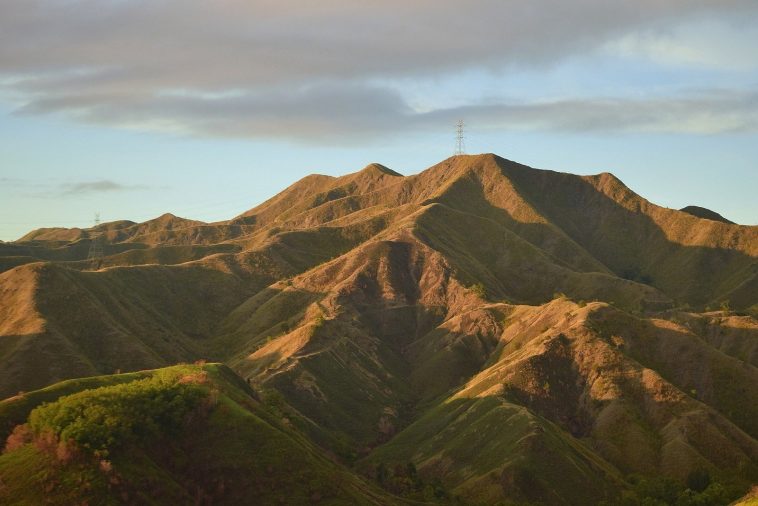Hiking a mountain is not a walk in the park. But summitting one has its own unique joys – especially if you come prepared.
Here are some suggestions to make your first-time hike smoother and more enjoyable.
Check the weather and the trail. Researching all about the mountain helps you prepare accordingly and prevent untoward incidents and failed expectations. One must not understimate a mountain based on its height or on others’ perceptions.
What are the features of its trail? Does it require rock scrambling or merely walking? What’s the weather forecast? Storms increase the risk of flashfoods and soil erosion, as well as hypothermia. If it is raining heavily in the mountain, play it safe and reschedule for another day.

What you wear matters. Light and moisture-wicking fabrics, such as polyester, are best for hiking a tropical country like the Philippines, especially if the mountain consists of trails without shade. Avoid cotton since it tends to be heavy when wet. If you will be passing by high cogon, wear arm protection.
However, if you are trekking a high-altitude mountain (one that is over 2,400 feet, such as Mt. Pulag), be sure to applyappropriate layering. Use light longsleeves like polyester or light merino for the base layer, a good wool or fleece jacket for the middle or insulating layer, then lastly a windproof and waterproof shell for the outermost layer. Waterproof shoes are recommended, so are socks, mittens, and beanies made of wool or fleece. All these help preserve body heat.
Also, your hands should be free to do things, that’s why backpacks are best.
Consider hiking shoes as an investment.Choose a tried and tested brand with good traction. If you are not sure if you will be hiking again, borrow from a friend. Don’t forget to break them in!
Pack light. A lighter backpack makes for an easier climb. Pack only the essentials:
- Sunscreen, especially for mountains with little tree cover and those who have high altitudes
- Hat
- Raincoat
- Fully charged headlamp for hikes at dawn, dusk, and night
- First aid kit, with bandages and medicines
- Repair kit, including Swiss army knife and paracord
- Trail food. High-fiber food such as bananas, grains, and raisins are good trail foods. We also bring chocolates and jelly for a quick sugar boost.
- Hydration. Bring at least two liters of water per person for a short and easy hike. Identify water sources for refilling water bottles on the trail, if any.
- Citronella lotion or spray e.g Human Nature

Start slow, then amp up speed as you go along. Be conscious of your own limits and do not try to catch up with people who walk faster than you. Walk at a slower pace in the beginning to allow your body to acclimatize to elevation. Speed it up to normal pace after 30 minutes or so. Breathe in even rhythm through your nose, not your mouth, to conserve oxygen.
Get a guide. Use the buddy-buddy system. Except for mountains where trails are very well established and guides are not required., I always get one when hiking with my daughter. Guides know the ins and outs of the trails, as well as its dangers. Tropical trails may have venomous snakes or poisonous plants (like the lipa or wood nettle) that you may not be aware of. Never hike solo. If you don’t have a guide, bring a friend who is familiar with the trail. And make sure that friends or family back home know where you’re headed!

Get in shape. Do daily exercises that boost leg endurance and power, such as walking or biking. Exercise strengthens your muscles and prevents shortness of breath, especially during ascents.
Respect the mountain. Follow the “leave no trace” (LNT) principle. Whatever you bring up a mountain, you must also be bring down. Don’t just pick or touch leaves, fruits, stones, or animals unless your guide says it is okay to do so. Avoid lighting up matches or lighters except in designated fire pits. All these help preserve a mountain in its natural state, so that other hikers can enjoy it in the years to come.
Respect local traditions. Somemountains in the Philippines, particularly in Cordillera, are considerered sacred. Pay attention to prohibitions and rituals. Greet other hikers you come across with in the mountain and give way as they pass. The mountain may be a tough place to be in, but it also merits gentleness and manners.
Don’t forget to enjoy! Mountain hiking may not be easy, but it can be a fun and joyful experience if done with proper planning. So prepare ahead, hit the trail, and enjoy the view at the top!




